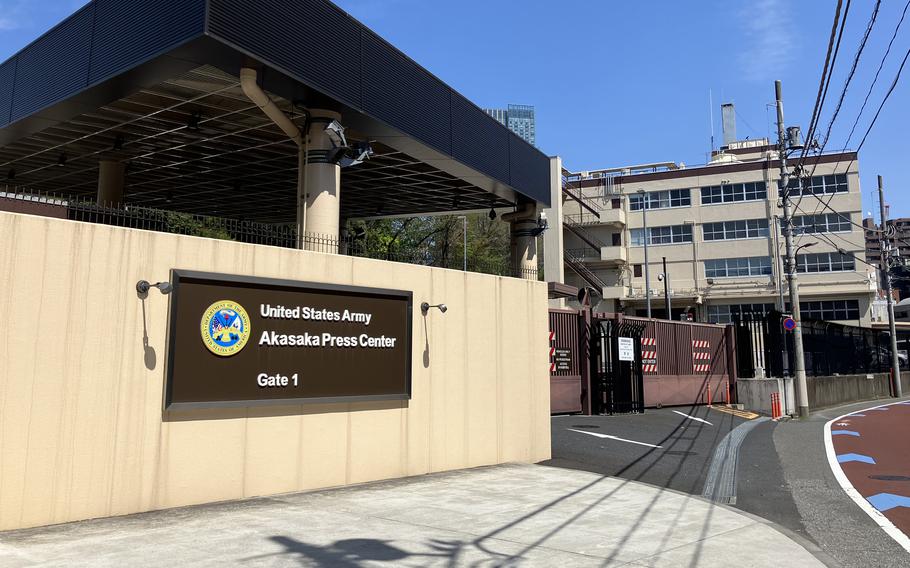
The Akasaka Press Center in the Roppongi district of central Tokyo. (Joseph Ditzler/Stars and Stripes)
YOKOTA AIR BASE, Japan — U.S. Forces Japan is establishing a satellite office in central Tokyo as part of its reorganization to a joint force command and to ease communications with Japan’s Ministry of Defense, according to the ministry.
USFJ established a new liaison department in March as part of its reorganization, the ministry said in an unsigned statement emailed Thursday to Stars and Stripes.
“To further strengthen operational cooperation between the Self-Defense Forces and the U.S. military a satellite office has been set up at the Akasaka Press Center to further deepen cooperation on a regular basis,” the ministry said.
Akasaka Press Center has been headquarters for Stars and Stripes Pacific since 1952. The fenced compound includes Hardy Barracks, an Army lodging facility, and several tenant commands, including the Office of Naval Research.
The curvy street outside the gate is named Seijoki Dori, or Stars and Stripes Street, after the newspaper.
The property includes a helipad, a center-city transit point for visiting dignitaries, including U.S. politicians, presidents, high-ranking military officers and foreign officials.
A spokesman for USFJ did not directly address a move to the press center.
“Our Alliance is stronger than ever and the upgrade of U.S. Forces Japan (USFJ) to a Joint Forces Headquarters, alongside Japan’s new Joint Operations Command, directly reflects this enhanced partnership,” spokesman Air Force Col. Greg Hignite said by email Thursday.
“The upgrade enables closer bilateral command and control and significantly improves our combined ability to ensure peace, stability, and deterrence in the region.”
The first phase of the upgrade focuses on enhancing USFJ’s operational capabilities and command and control by streamlining its structure into a dedicated warfighting command with increased staff and resources, Hignite said.
“This will result in greater agility, lethality, and deeper integration with the Japan Self-Defense Forces,” he said. “USFJ is in close collaboration with [U.S. Indo-Pacific Command] on developing a successful transition into a Joint Task Force Headquarters.”
Lloyd Austin, the U.S. defense secretary at the time, announced USFJ’s restructuring in July; his successor, Defense Secretary Pete Hegseth, confirmed the changes Sunday on his visit to Tokyo.
USFJ oversees about 115,000 troops, civilians and family members in Japan.
Relocating some of its functions from Yokota Air Base in western Tokyo to the busy Roppongi district in the city puts USFJ personnel within 2½ miles of the defense ministry headquarters at Camp Ichigaya in Tokyo.
The ministry in a ceremony last month officially activated its joint operations command, a counterpart to a restructured USFJ.
The changes are part of the allies’ response to growing threats in the region from China, Russia and North Korea.
Members of USFJ’s new department and personnel who frequently visit Ichigaya will move to the press center, the Japanese statement said.
“Only a small number of personnel will be based at the satellite office at Akasaka Press Center in order to minimize the visible impact to the area,” the statement said.
With the move, the Self-Defense Forces and the U.S. military may communicate and coordinate more closely than ever before, according to the ministry statement.